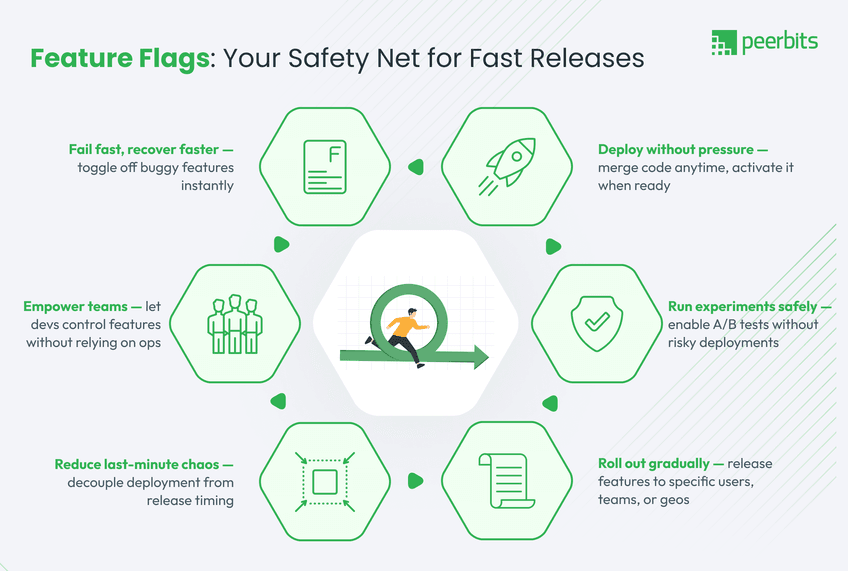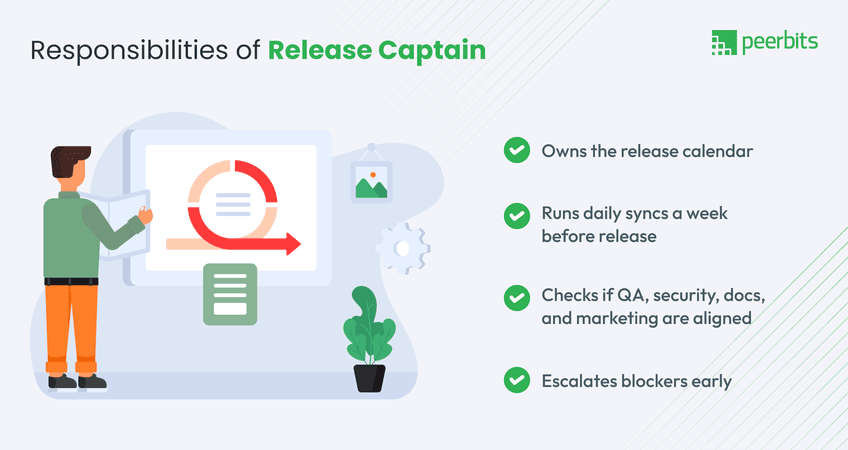If you're here, you're probably either knee-deep in Jira tickets, herding multiple product teams, or staring down another release date that feels more like a bet than a confident strategy.
Or, you are a nerdy manager who likes to prepare in advance!
Do you know, around 31% of software projects are cancelled before completion, and 52.7% go over budget while in making, according to the Standish Group’s Chaos Report.
And, to your shock, only 16.2% of software projects make it on time and within budget.
So, first get rid of the self-pity that “you” are only struggling with software release planning. And especially software release planning in multi-team orgs is the ultimate warzone where even the best strategies can crumble under interdependencies, miscommunication, and last-minute surprises.
The truth? No matter how seasoned your teams are, software release planning across multiple teams always comes with growing pains. Unless you're very intentional about how you manage it.
Let’s get into the software development release management best practices that turn chaos into coordination, and features into actual software releases, planning for Multi-team orgs (without triggering post-launch tasks).
Core challenges in software release planning
Planning is the easy part. But when it comes to syncing five teams, three backlogs, QA, product, security sign-offs, DevOps, and the software development services that bring it all together, that’s where releases either click seamlessly or collapse like a Jenga tower.

Just like any problem-solving tactic, first you need to “know” and “accept” that there is a problem in your software release plan, then only can we move further to fix. Some of the common challenges are:
Listing out the common software release planning challenges for multi-team orgs that you should check from the start are:
1. Team A ships a feature that breaks Team B's dependency
Team A’s changes disrupted functionality that Team B relies on. This reflects poor coordination and a lack of integration checks.
2. Security gives a last-minute thumbs down (again)
Security issues are flagged too late in the cycle. This shows missing early-stage security reviews in the workflow.
3. Release notes are missing
No documentation was published with the release. This impacts visibility, support, and internal understanding.
4. Marketing launched the campaign a week early
The campaign went live before the product was ready. A clear sign of cross-team misalignment in release planning.
These aren’t edge cases; they’re the reality when multiple teams plan in isolation. But how to get ahead of them under such chaos & pressure? For that, follow along.
How to Manage Software Releases in Multi-Org?
Release management is complex, but it doesn’t have to be chaotic. Use these 10 best practices for software release management as your starting point to plan smarter and ship more confidently across teams.
1. Start with a unified release calendar
You’d be amazed how many teams don’t share a release calendar or worse, operate on Google Sheets that no one updates. And how can we fix it?
The Fix:
Here are the three best practices for software release management that you should start from the get-go:
- Use a shared release calendar across all software development teams for hire.
- Include feature freezes, QA windows, security reviews, and marketing launch dates.
- Align not just on what’s shipping, but when and who needs to approve it.
Bonus tip: Assign a "calendar owner" responsible for versioning and communication. Just one person or you can consider a team, who will be managing this while improving their coordination.
2. Cross-team planning
Those long hours, long table meets, including every designated person. Say big no to it right away! Stop dragging everyone into an 80-person planning call. That’s not planning; that’s chaos with a Zoom link.
The Fix:
Make sure to follow it throughout the process of your sofware development release management:
- Hold cross-team planning asynchronously first.
- Then bring leads together for a high-signal sync.
Async tools like Notion, Confluence, or shared Miro boards allow teams to prepare better and say more in less time.
Read more: Complete guide to building software planning from scratch
3. Dependencies kill releases so track it
You know, those age-old situations where Team X couldn’t finish because Team Y’s API wasn’t ready, and now the whole release is pushed back. And everyone’s kind of pissed off internally blaming the other team.
The Fix:
Try following these two release management best practices to make sure you are tracking everyone’s work without offending:
- Map inter-team dependencies at least 2 sprints in advance.
- Assign owners on both sides. No owner? It doesn’t get on the release calendar.
Visualize dependencies using something like a dependency board or swimlane timelines. These provide a bird’s-eye view of critical connections.
4. Embrace Feature Flags (seriously, use them)
If you’re not using feature flags in a multi-team setup, you're shipping with your fingers crossed. And luck doesn’t always come handy when you are dealing with the software release management process.

The Fix:
Try practicing the following to keep your agile software release management on track:
- Merge code without making it live.
- Enable A/B testing and phased rollouts.
- Give teams autonomy without risking platform stability.
Some great tools like LaunchDarkly, Unleash, Split.io. Use them to reduce release risk and boost team confidence.
5. QA issues are real
Yes, I said it. Despite how sideline character we consider QA, they are often the last stop before release management planning and the first to get squeezed.
The Fix:
Surely, you don’t have to do QA's job by yourself, but just make sure to implement the following in your QA team:
- Test in parallel. Start integration and regression testing in staging early.
- Automate what you can. Unit tests, smoke tests, and basic regressions should be handled via CI.
Also, consider performance and load testing as part of your definition of done. It’s better to fail a test in staging than to crash in production.
6. Define a “Ready for Release” checklist
Too many teams treat code merged into main as “done.” Until the rollback happens.
The Checklist:
Here’s the list of things you need to keep in mind that many experts have claimed in their best practices for software release management guides:
- All features behind flags or fully tested
- QA passed in staging
- Security review completed
- Docs and release notes written
- Rollback plan documented
- Stakeholders signed off
Consider making this checklist part of your CI pipeline gating logic. If any step fails in your release management process, the pipeline doesn’t progress.
7. Pre-Mortems > Post-Mortems
Everyone holds a post-mortem after the release management planning breaks. What if you anticipated the break before it happened? Isn’t that great? Well, here’s how to do it.
The pre-mortem fix:
To keep your release planning in agile methodology on track, make sure to check up on:
- Ask: “If this release failed, what would be the top 3 likely reasons?”
- Get every team to contribute.
It's a 30-minute exercise that can save 3 days of crisis mode. Document it and revisit it during your post-release retro.
8. Integrate DevOps from day zero
Release planning management isn’t just about code; it’s also about CI/CD pipelines, infra scaling, database migrations, and rollback plans.
The Fix:
These are software development release management best practices that any DevOps expert will swear by:
- Involve your DevOps or platform engineers early in sprint planning.
- Add infra tasks to sprint boards — treat them like any other user story.
Also, align on environmental readiness. Check whether staging and production are similar enough to trust your tests and is your release process integrated smoothly into your DevOps workflow?
9. Assign a Release Captain (or Coordinator)
In a multi-team release, someone needs to be the conductor. Otherwise its hard to catch up with the software release management processes when they are behind schedules.

The Fix( Release captain can do):
- The release captain obviously manages the release calendar.
- He/she can run daily syncs in advance for safety.
- Most importantly release captain should/can escalates blockers early.
- He/she can also check on QA, security, docs, and marketing before & during as well.
This doesn’t have to be someone senior, just organized, accountable, and comfortable asking, "Is this really ready?" and capable of responding honestly.
10. Communication > status reports
Your best-laid plans mean nothing if teams aren’t talking. It sounds very lame, though it is one of the most overloosed best practise of software release management that a lot of custom software dev companies forget.
The Fix :
- Use a shared Slack channel for each release.
- Pin a release checklist, daily updates, and deployment plans.
- Encourage teams to flag blockers without blame.
Create a culture where raising issues is rewarded — not punished. Silence is the biggest risk.
Bonus tips to avoid software release planning pifalls
Here are some of the necessary extra tips on software release management that you can do to make your strategies scope-creep proof:
1. Don’t launch on Friday (Yes, still true)
Unless you want to spend your weekend on calls.
This is an old-school rule, but it’s here for a reason. Bugs don’t care about weekends.
If your exec team insists on a Friday launch, remind them how much downtime costs you per minute.
2. Post-release isn’t optional
Too many teams collapse post-release and move on. That’s how regressions and user complaints pile up.
To Fix it:
- Run a 48-hour post-release review.
- Log user reports, performance issues, and analytics in one place.
- Hold a cross-team retrospective.
Add a feedback loop to refine your future software release plan. Iterate, don’t stagnate.
Release management: Quick challenges & fixes
| Pitfall | Why It Happens | What to Do |
|---|---|---|
| Teams don’t know what’s in the release | No shared scope or documentation | Maintain a release PRD + changelog |
| Code merges last minute | Teams rush QA or get blocked | Set a hard feature freeze — enforce it |
| Infra tasks are forgotten | Devs focus on features only | Treat infra as part of the backlog |
| Marketing isn't informed | No stakeholder sync | Add them to release planning early |
| Hotfixes become the norm | Bad testing strategy | Shift testing left, automate more |
Great release planning best practices aren't about velocity; it’s about predictability. When your product, marketing, QA, and infra teams all know what’s happening, when, and why, you stop launching in panic mode and start releasing with confidence.
And when stakeholders start seeing consistency in how you ship, internal trust builds. That means less micromanagement and more team autonomy.
Conclusion
Let’s be real. Software release planning in agile across multiple teams will never be easy. But it doesn’t have to be a stress factory either. With the right mix of software release management tools, rituals, and a healthy dose of realism, you can move from "we hope it ships" to "we know it will."
Set clear expectations. Automate when you can. Assign ownership. Communicate often. Document always. And hey, you’ll sleep better, your customers will thank you, and your team won’t burn out sprinting through hotfixes.

FAQs
What are the biggest risks in multi-team release planning?
Avoid last-minute surprises by integrating security and QA into early sprint cycles and pre-release workflows.
See recommendations for tools like Jira, Confluence, LaunchDarkly, and dependency boards that reduce chaos and improve visibility.
Learn techniques to define and enforce feature freeze dates, and how to communicate scope changes without derailing timelines.
Implement planning habits and tools that create predictability, reduce last-minute pressure, and build team trust.








